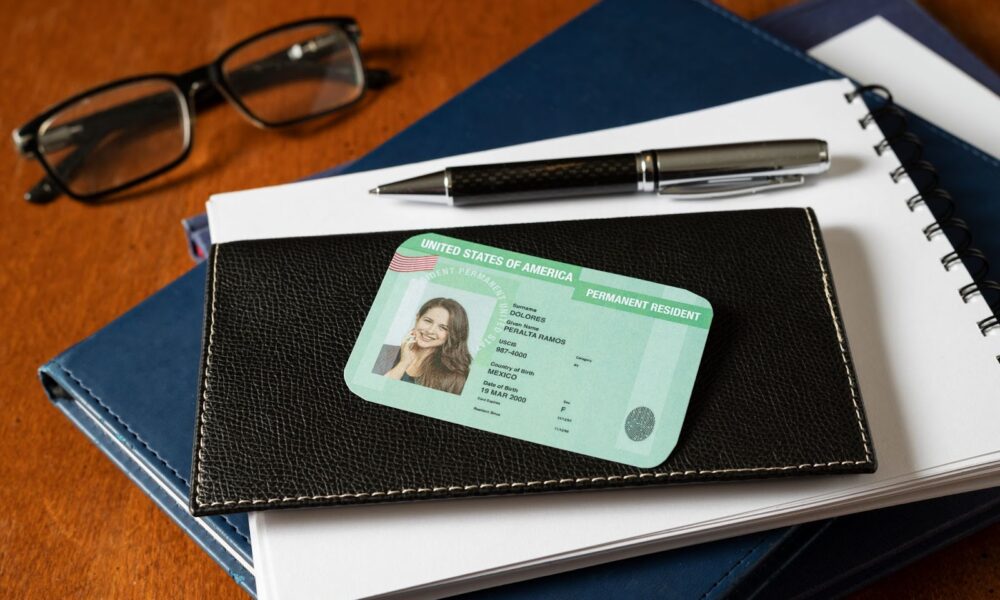In an era where confirming one’s identity is paramount for a multitude of transactions and engagements, the notion of a photographic identification card carries profound significance. Whether it’s embarking on an air journey or participating in electoral processes, possessing a legitimate form of ID frequently becomes imperative. Yet, what precisely defines a photo ID, and what underlies its indispensable role within contemporary society?
Understanding Photo IDs
A photo ID, an abbreviation for photographic identification, is a crucial document used to verify an individual’s identity visually. It combines a person’s photograph with essential personal details like name, date of birth, and often additional identifying information such as address or signature. Whether you’re traveling internationally, proving your age, or accessing secure facilities, having a valid photo ID is indispensable.
Common Types of Photo IDs
Driver’s License:
- Issued by governmental authorities to individuals who have passed a driving test and met other licensing criteria;
- Typically includes a photo, signature, and personal information of the license holder;
- Widely recognized and accepted as a primary form of identification for various purposes;
- Different categories may exist based on the type of vehicle the license permits driving (e.g., motorcycle, commercial vehicles).
Passport:
- An internationally recognized travel document issued by a country’s government to its citizens;
- Contains vital information such as nationality, date of birth, and passport number, in addition to the holder’s photo;
- Essential for crossing international borders and serves as proof of identity and citizenship;
- Various types may exist, including regular passports, diplomatic passports, and official passports.
National Identity Card:
- Issued by certain countries as official proof of identity and citizenship;
- Features a photograph of the cardholder along with unique identification numbers or codes;
- May be mandatory or optional depending on the country’s laws and regulations;
- Provides a convenient form of identification for domestic use, such as accessing government services or voting.
Employee ID Card:
- Provided by employers to their staff for identification and access control purposes;
- Typically includes the employee’s photo, name, job title, and sometimes the company logo;
- Helps maintain security within the workplace and facilitates access to restricted areas or resources;
- Can also serve as a means of verifying employment status and granting privileges or benefits.
Student ID Card:
- Issued by educational institutions to their students for identification purposes;
- Contains the student’s photo, name, ID number, and the institution’s name;
- Often required for accessing campus facilities, borrowing library materials, or receiving student discounts;
- May also serve as proof of enrollment for various purposes, such as obtaining student discounts or applying for student loans.
Importance of Photo IDs
Identity Verification: Photo IDs serve as a fundamental tool for confirming an individual’s identity across a spectrum of scenarios, from mundane daily activities to critical transactions. Whether it’s setting up a new bank account, applying for a job, or checking into a hotel, a reliable photo ID is indispensable. Here’s why:
- Job Applications: Many employers require photo IDs as part of the hiring process to authenticate the identity of prospective employees;
- Financial Transactions: Banks and financial institutions mandate the presentation of photo IDs when opening new accounts or conducting significant transactions to prevent identity theft and fraud;
- Accessing Services: From healthcare facilities to educational institutions, numerous services necessitate photo identification to ensure only authorized individuals receive access or benefits.
Security: The inclusion of a photograph on a photo ID significantly bolsters security measures by introducing a visual verification component. This not only deters fraudulent attempts but also aids in swiftly detecting any discrepancies. The security benefits of photo IDs extend to:
- Preventing Identity Theft: A visual confirmation of an individual’s identity helps curb instances of identity theft and impersonation;
- Enhanced Verification: Alongside other identifying information, such as name and date of birth, a photograph provides an additional layer of scrutiny, making it harder for imposters to slip through unnoticed;
- Public Safety: Photo IDs contribute to public safety by enabling authorities to quickly identify individuals in various situations, including emergencies or law enforcement encounters.
Compliance: Legal and regulatory frameworks often necessitate the possession of valid photo IDs to ensure adherence to specific requirements. Whether it’s age verification for purchasing age-restricted products or complying with immigration regulations, photo IDs play a pivotal role. Consider the following compliance-related aspects:
- Age Verification: Retailers enforcing age restrictions on products like alcohol or tobacco rely on photo IDs to confirm the legal age of purchasers;
- Immigration and Border Control: Valid photo identification, such as passports, is indispensable for complying with immigration laws and facilitating smooth border crossings;
- Regulatory Compliance: Various industries, including healthcare and transportation, are subject to regulations mandating the verification of identities through photo IDs to uphold legal standards and ensure accountability.
Travel: The significance of photo IDs becomes particularly evident in the realm of travel, where confirming one’s identity is a prerequisite for embarking on journeys, be it domestic or international. Whether traveling by air, land, or sea, possessing the right identification is non-negotiable. Here’s why photo IDs are indispensable for travelers:
- Airport Security: Air travel requires passengers to present valid photo IDs, such as passports or government-issued IDs, at security checkpoints and during boarding;
- International Travel: Crossing international borders necessitates possessing a valid passport or other recognized travel documents containing a photograph to comply with immigration requirements;
- Identity Confirmation: Photo IDs ensure that the person traveling matches the information provided in travel documents, thereby enhancing security and facilitating smoother travel experiences.
Voting: The integrity of democratic processes relies heavily on the legitimacy of voters and the prevention of electoral fraud. In jurisdictions where voter identification laws exist, presenting a valid photo ID is a crucial requirement. Here’s why photo IDs are deemed essential for preserving the integrity of the electoral system:
- Preventing Voter Fraud: Requiring photo IDs at polling stations helps mitigate the risk of voter impersonation and fraud, thereby safeguarding the fairness and accuracy of election outcomes;
- Ensuring Accountability: Photo IDs enhance accountability by ensuring that only eligible voters cast their ballots, thereby upholding the democratic principles of fair representation and electoral transparency;
- Public Confidence: Upholding stringent voter identification measures fosters public confidence in the electoral process, assuring citizens that their votes are protected and elections are conducted with integrity.
Navigating Challenges and Essential Considerations in Photo Identification
Photo identification, a cornerstone of modern society, plays a crucial role in various spheres, from access to services to ensuring security. However, its implementation isn’t without hurdles. Delving into the complexities of photo IDs unveils several critical challenges and considerations that merit attention:

1. Accessibility
Photo IDs are indispensable for various transactions, from opening bank accounts to accessing healthcare services. Nonetheless, accessibility remains a significant concern, particularly for marginalized communities. Consider the following aspects:
- Socioeconomic Barriers: Obtaining government-issued photo IDs often incurs costs, such as application fees and transportation expenses, posing challenges for low-income individuals;
- Geographical Constraints: Rural areas may lack convenient access to government offices or agencies where IDs can be obtained, further exacerbating disparities;
- Documentation Requirements: The stringent documentation needed to acquire photo IDs, such as birth certificates or social security cards, can be daunting, especially for individuals with limited resources or unstable housing situations.
Recommendations:
- Implementing mobile ID issuance units to reach remote or underserved communities;
- Waiving fees for ID applications or providing subsidies for low-income individuals;
- Simplifying the documentation process by accepting alternative forms of identification or introducing flexible verification methods.
2. Privacy Concerns
The collection and storage of personal information, including photographs, raise legitimate privacy apprehensions. Safeguarding individuals’ data is paramount to mitigate potential risks and uphold privacy rights. Key considerations include:
- Data Security: Robust encryption and secure storage protocols are imperative to prevent unauthorized access or breaches that could compromise sensitive information;
- Consent and Transparency: Clear and explicit consent mechanisms should be established to ensure individuals understand how their data will be used and shared;
- Data Minimization: Collecting only necessary information and adopting anonymization techniques whenever feasible can help minimize privacy risks.
Recommendations:
- Implementing stringent data protection measures in compliance with established privacy regulations (e.g., GDPR, CCPA);
- Providing individuals with transparent information regarding data handling practices and their rights over their personal information;
- Regularly auditing and updating security protocols to address emerging threats and vulnerabilities.
3. Fraud Prevention
As technology advances, so do fraudulent techniques, necessitating robust measures to combat identity fraud and counterfeiting. Ensuring the integrity and authenticity of ID documents is essential for maintaining trust and security. Consider the following strategies:
- Incorporating Security Features: Advanced security features, such as holograms, watermarks, and biometric identifiers, can enhance the tamper resistance of ID cards and deter counterfeiters;
- Verification Mechanisms: Implementing verification protocols, such as barcode scanning or biometric authentication, enables quick and reliable validation of ID documents;
- Continuous Innovation: Staying abreast of technological advancements and evolving fraud tactics is crucial for adapting security measures and staying one step ahead of potential threats.
Recommendations:
- Collaborating with industry experts and law enforcement agencies to identify emerging fraud trends and develop proactive strategies;
- Investing in research and development to innovate secure ID technologies and authentication methods;
- Providing comprehensive training for frontline staff to recognize and respond effectively to suspicious identification attempts.
Conclusion
In an era where our individual identities hold ever-growing significance, photo identification assumes a pivotal position in the validation and affirmation of our selves. Whether in routine exchanges or pivotal engagements, these credentials serve as tangible tools for asserting our identity and upholding security measures. Grasping the essence of what defines a photo ID and comprehending its significance is paramount in maneuvering through the intricacies of contemporary existence.
